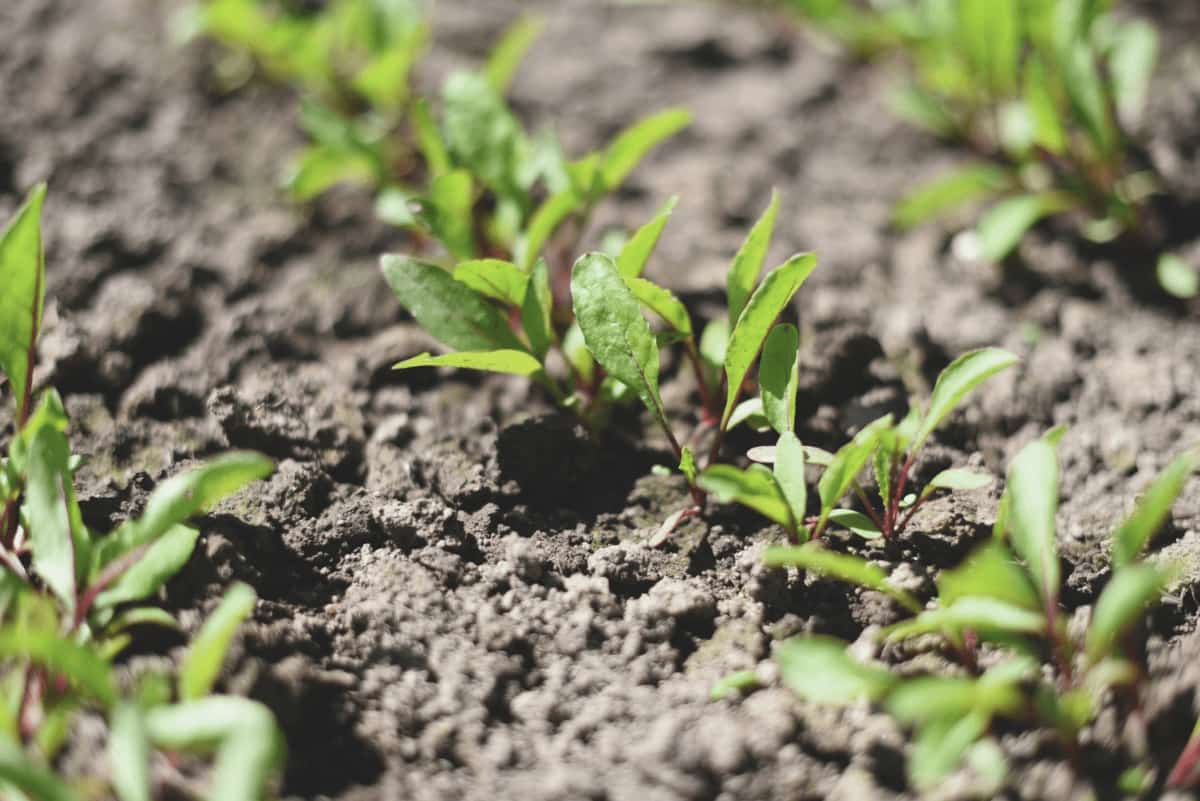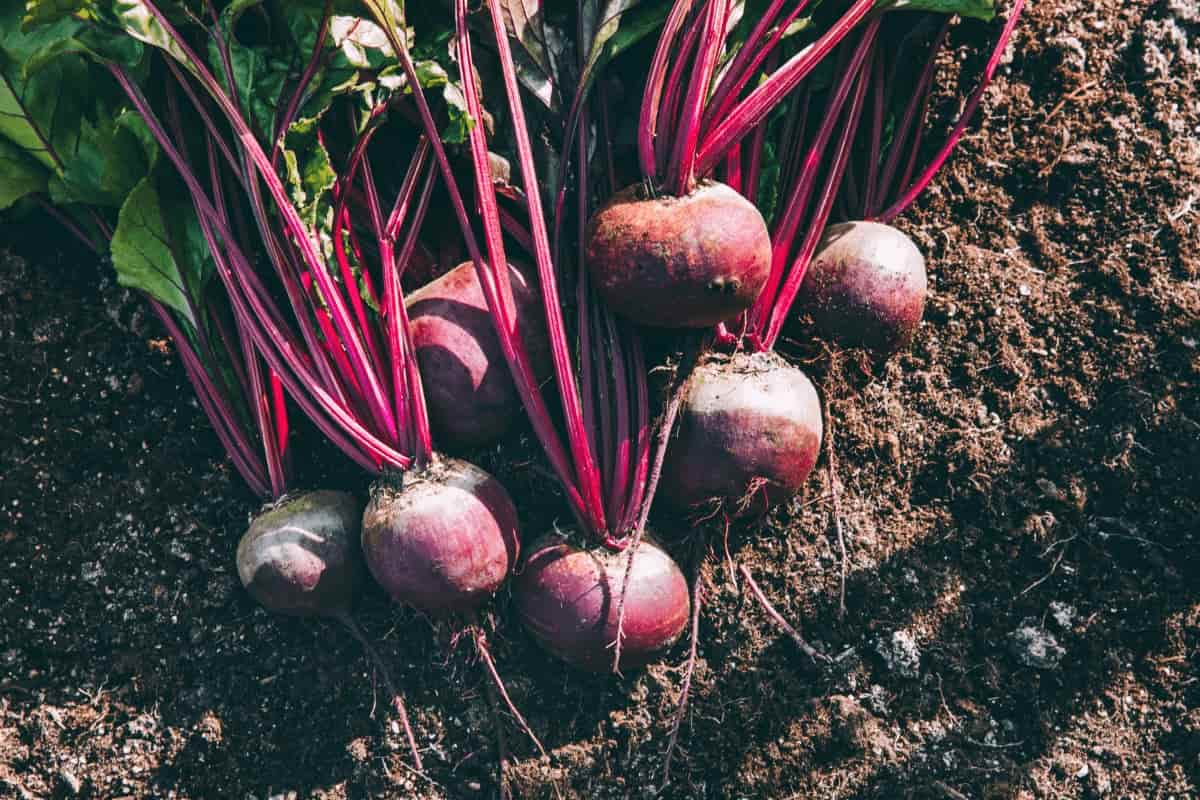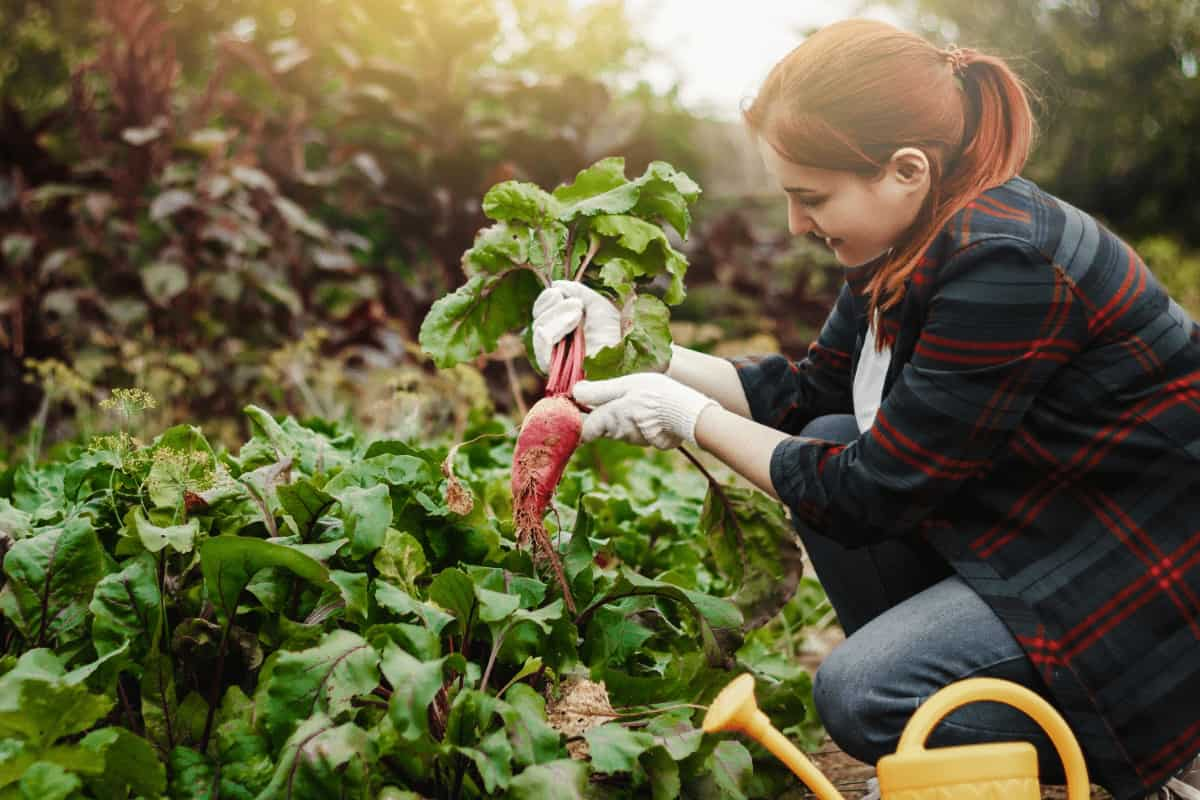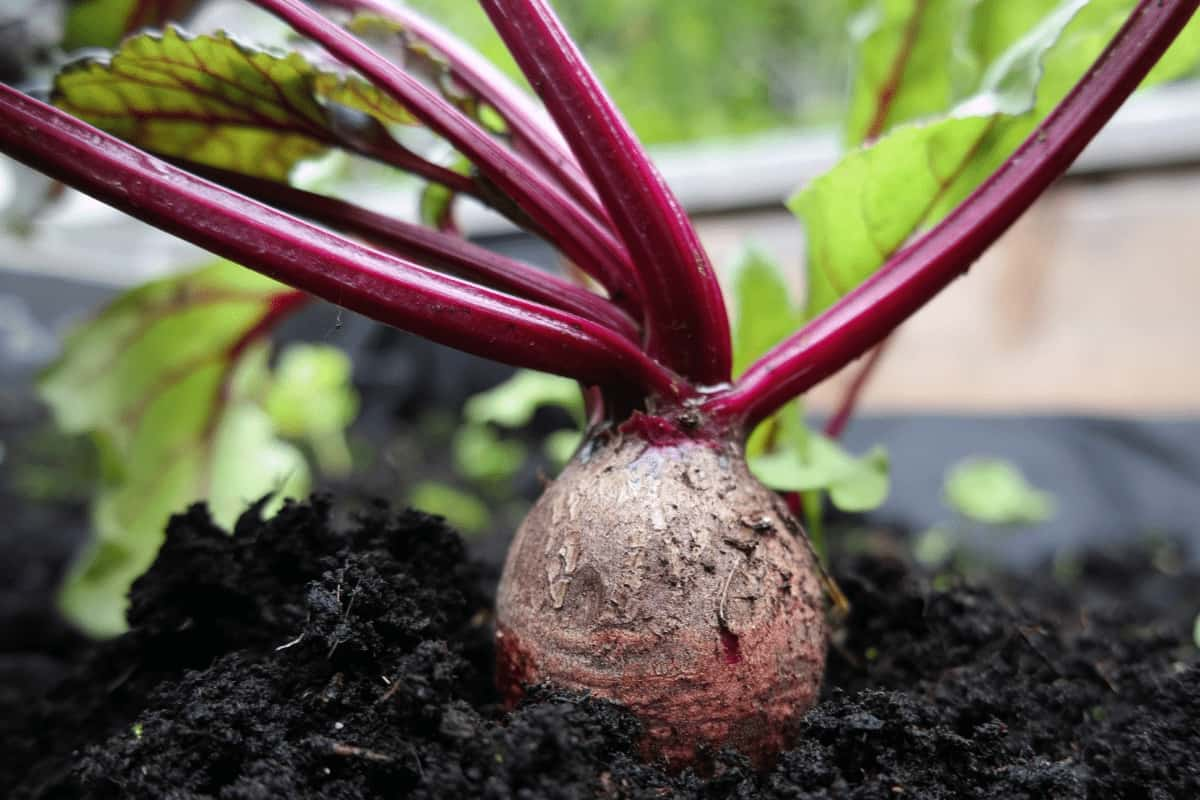When it comes to cultivating a healthy and bountiful garden, companion planting has a significant role. Specifically, companion plants for beets can bring immense benefits in terms of growth and yield. We can deter pests, attract pollinators, enhance soil fertility, and improve overall garden aesthetics through strategic planting.

This technique isn’t just about plants that grow well with beets; it also involves recognizing the plants that can adversely affect beet growth, so one must also be aware of bad companion plants for beets. Here, we’ll examine what you should not plant next to beets, answer questions like “Can beets grow with cucumbers?” and more.
Benefits of Companion Plants for Beets in the Garden
The main advantage of employing companion plants in your garden is that they work harmoniously with your beets, leading to enhanced growth and yield. The benefits of beet companion plants include improved soil health, increased pollination, pest control, and better resource utilization. For instance, beans and peas, the best companion plants for beets, are nitrogen-fixing plants that enrich the soil and benefit the beets grown nearby. On the other hand, planting onions and garlic with beets can help deter pests, thanks to their strong scent.
Best Companion Plants for Beets to Deter Pests
Pest control is one of the most daunting tasks for any gardener, and companion planting provides a natural and chemical-free solution. Onions, garlic, and marigolds are some of the best companion plants for beets when it comes to pest control. These plants emit strong smells that are unappealing to pests, making them less likely to invade the beet plants. On the contrary, avoid planting beans or mustards near your beets as they attract pests that can damage your beet crop.
Beets Companion Plants for Improved Pollination
Increased pollination is another substantial benefit brought about by companion planting. Lavender and marjoram attract bees, butterflies, and other helpful insects, leading to increased beet yield. They are visually appealing and add an aesthetic element to the garden, but their primary role is facilitating better pollination for the beets.
Companion Plants for Beets in Containers
When it comes to container gardening, the principles of companion planting still apply. Companion plants for beets can work exceptionally well in containers. Plants with similar watering and sunlight needs, such as lettuce and radishes, make excellent companions for beets in containers. They don’t compete fiercely for nutrients, making cohabitation in a container feasible. However, be cautious about planting carrots and potatoes with beets in containers as they can compete for space, hampering each other’s growth.
In case you missed it: 10 Common Problems With Beetroot Plants: Treatment and Solutions

Companion Herbs for Beets in Organic Gardening
Companion herbs for beets can contribute significantly to organic gardening. Herbs like mint and rosemary can deter pests while adding to the soil’s nutritional content, all without any harmful chemicals. Similarly, planting basil with beets can enhance the flavor of the beetroot and leaves. Organic gardeners often take advantage of the properties of these herbs to naturally protect and enhance their beet crops.
Flowering Companion Plants for Beets to Attract Beneficial Insects
Flowering companion plants for beets makes your garden more attractive and plays a crucial role in attracting beneficial insects. These insects aid in pollination and also prey on harmful pests. Marigold, nasturtium, and borage are excellent flowering companions for beets. Their vibrant blooms attract beneficial insects, such as ladybugs and lacewings, which feed on pests like aphids that can damage beet plants.
Companion Vegetables for Beets in Raised Beds
Beets can benefit from a host of companion vegetables in raised bed gardening. Cabbage, Brussels sprouts, and kohlrabi coexist well with beets in raised beds. They have similar nutritional and sunlight requirements, allowing them to flourish together. However, keep in mind to avoid planting potatoes and carrots next to beets in raised beds as they compete for the same nutrients and can hamper each other’s growth.
In case you missed it: 10 Common Problems With Garden-Grown Beetroot Plants: Treatment and Solutions

Companion Plants for Beets to Improve Soil Fertility
Certain plants can help improve soil fertility when grown with beets. Legumes, such as peas and beans, are beneficial companions for beets as they fix nitrogen into the soil, improving its fertility and benefiting the beet crop. Spinach and chard are other good companions that can aid in maintaining soil health. However, avoid planting field mustard near your beets as it can deplete the soil nutrients and negatively impact beet growth.
Companion Plants Chart for Beets in the Garden
A companion plants chart for beets can be a helpful visual guide in planning your garden layout. The chart can depict good companions, such as onions, garlic, beans, and peas, that can enhance the growth and yield of your beets. It can also indicate bad companions, like mustards and beans, that can attract pests or deplete soil nutrients.
Furthermore, the chart can answer questions like “Can beets grow with cucumbers?” by illustrating whether the planting combinations are beneficial or harmful. Such a tool can be invaluable in maximizing the benefits of your gardening efforts.
Practical Steps for Implementing Companion Planting for Beets
Implementing companion planting in your garden requires careful planning and thoughtful execution. Start by charting the garden space, considering the growing requirements of the beets and their potential companion plants. Position the companion plants strategically to provide maximum benefits to the beets. For instance, plant onions and garlic around the perimeter of your beet crop to deter pests.
In case you missed it: Pepper Companion Plants: Benefits, What and What Not to Grow with Peppers

Use herbs like mint and rosemary between beet plants to repel pests further and enrich the soil. Remember to account for sunlight and watering needs while spacing your plants to ensure they coexist without hindering each other’s growth. Make sure there’s enough space for the roots of both beets and companion plants in containers or raised beds. Prevent overcrowding to avoid competition for nutrients and space, which hampers plant growth.
Conclusion
Companion planting is an ancient practice that continues to prove its relevance and effectiveness in modern gardening. Learn and use companion planting for beets to improve your garden with healthier plants and bigger harvests. It’s crucial to remember that not all plants make good companions, and some can even negatively impact the growth and development of your beets.
Hence, careful planning and consideration are necessary when selecting and positioning your companion plants. By strategically incorporating these companions into your garden, you can create a naturally harmonious ecosystem that benefits your beets and contributes positively to your garden’s overall health and beauty.
- Ultimate Guide to Ossabaw Island Hog: Breeding, Raising, Diet, and Care
- Ultimate Guide to Juliana Pig: Raising Facts, Size, Diet, Care, and Lifespan
- Raising Lleyn Sheep: Disadvantages, Price, Uses, Characteristics, and Care
- Ultimate Guide to Meishan Pig: Breed Facts, Breeding, Raising, and Care
- Ultimate Guide to Teacup Pigs: Raising, Diet, Lifespan, Cost, and Care
- Guide to Raising Poll Dorset Sheep: Facts, Profile, Characteristics, Uses, and Care
- Ultimate Guide to Bighorn Sheep: Characteristics, Diet, Lifespan, Breeding, and Lifecycle
- Ultimate Guide to Raising Katahdin Sheep: Farming Facts, Breed Profile, Uses, and Care
- Ultimate Guide to Raising Oreo Cows: Belted Galloways Farming Facts, Profile, Uses, and Care